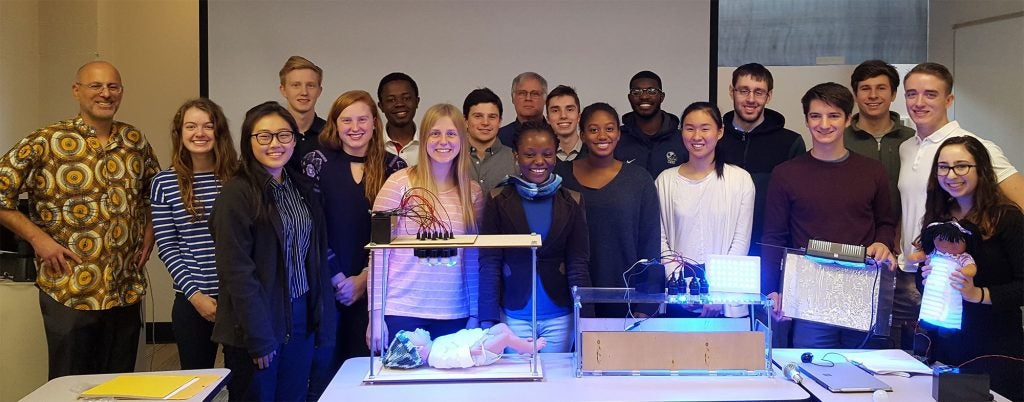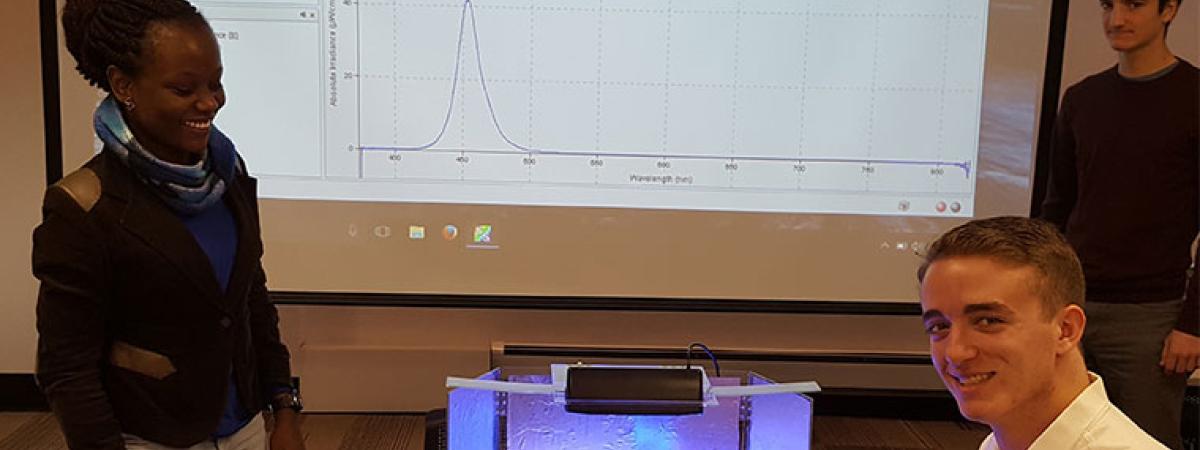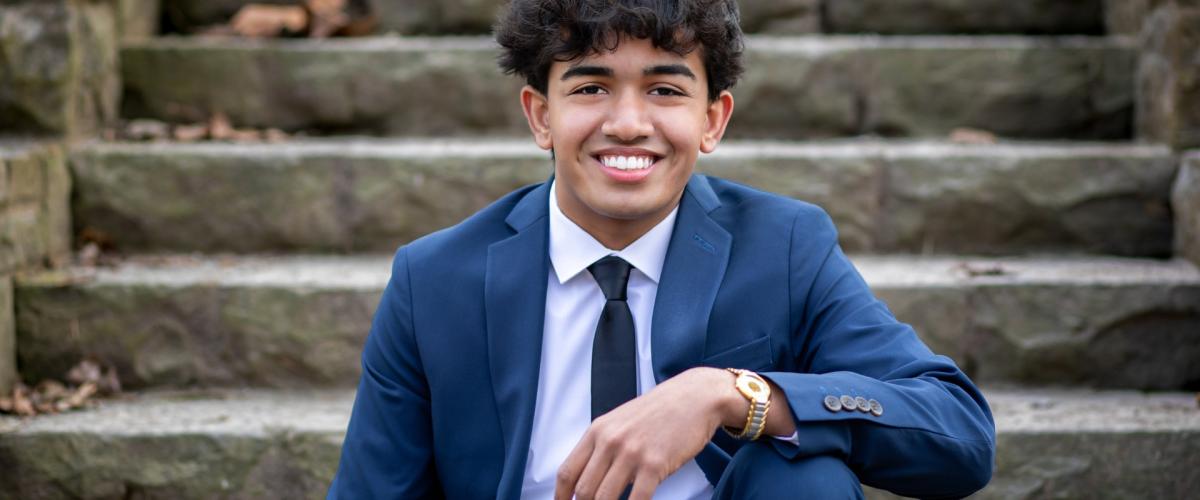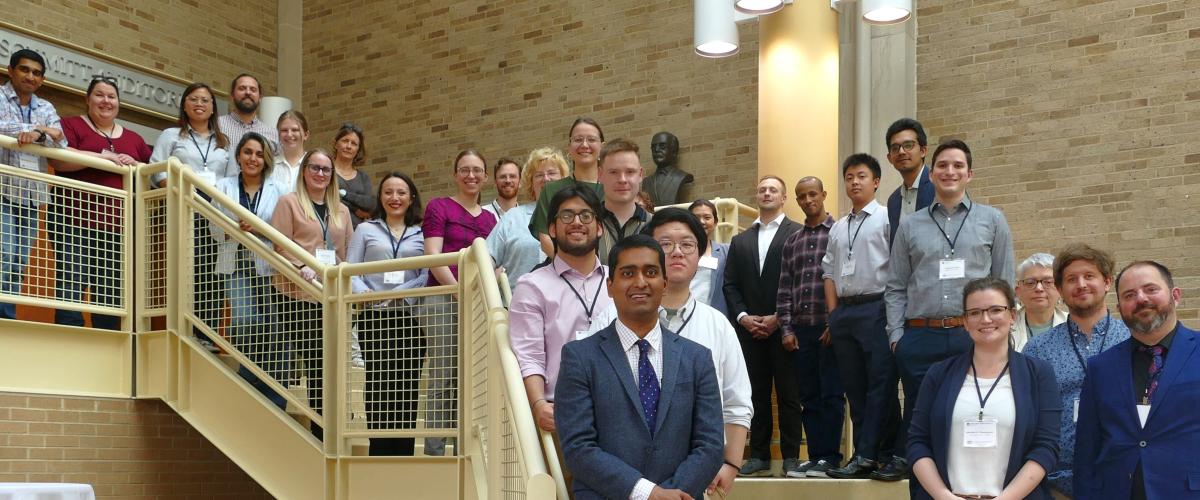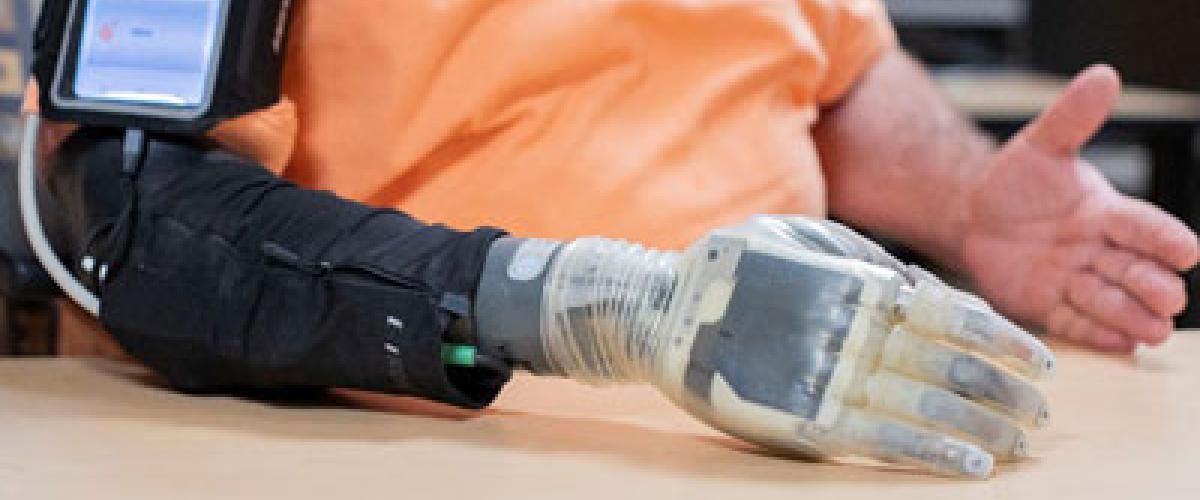Students in a SAGES first seminar course designed and built prototypes of off-grid phototherapy devices to treat jaundice for babies in rural Nigeria
By Ellen Walter In their first semester at Case Western Reserve University, 18 students created devices that could help solve a health care problem in rural sub-Saharan African villages. “Engineering Design for the World’s Poorest” is not a theoretical class; the SAGES First Seminar uses hands-on design to solve concerns of the world’s most impoverished communities. This fall, the class examined an issue that a pediatrician in Nigeria had brought to Professor Daniel Lacks’ attention: jaundice treatment in areas without electricity. Lacks, who teaches the course, is the C. Benson Branch Professor of Chemical Engineering and chair of the Department of Chemical and Biomolecular Engineering. He also directed CWRU’s section of the U.S. Department of State's Mandela Washington Fellowship for Young African Leaders this summer, which invited the top 1,000 rising young leaders from sub-Saharan Africa to collaborate, network and train at 38 American universities. The pediatrician, Uche Anene-Nzelu, was one of 25 leaders who came to campus.Addressing a major health issue
While at CWRU for the program, Anene-Nzelu explained to Lacks that jaundice was a major medical issue for many sub-Saharan infants. Jaundice, a liver condition caused by an excess of bilirubin proteins that yellow newborn babies’ skin, is easily treated with one or two days of exposure to blue light, and Anene-Nzelu treats it routinely in her role at Lagos University Teaching Hospital in Nigeria. Many rural communities, however, are off-grid, making treatments with electricity impossible. If moderate and severe cases of the condition go untreated, they may cause permanent developmental issues. Before she returned to Nigeria this summer, Anene-Nzelu and Lacks built a crude prototype of a portable, solar-powered phototherapy device. This device became the focus of Lacks’ SAGES first seminar this year, and six groups of students built working prototypes themselves. He advised his students to consider two criteria in their design: portability and affordability. The students presented the prototypes they created on Thursday, Dec. 7, with Anene-Nzelu in attendance. The solar-powered prototypes varied widely, including a blanket with a washable cover, box-like structures with adjustable intensity of treatment, a collapsible acrylic enclosure, and a handheld LED panel. Most of the prototypes were built in the Larry Sears and Sally Zlotnick Sears think[box], CWRU’s facility for innovation and entrepreneurship, where the students learned skills such as building basic circuits, soldering, and laser-cutting parts. Lacks plans to travel to Nigeria in February with prototypes of the devices they designed.